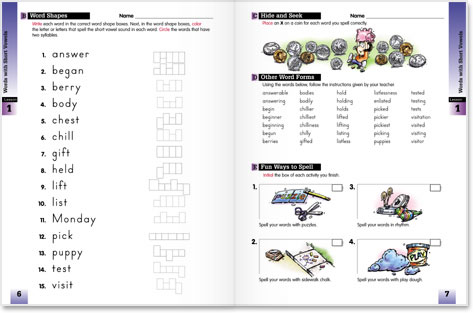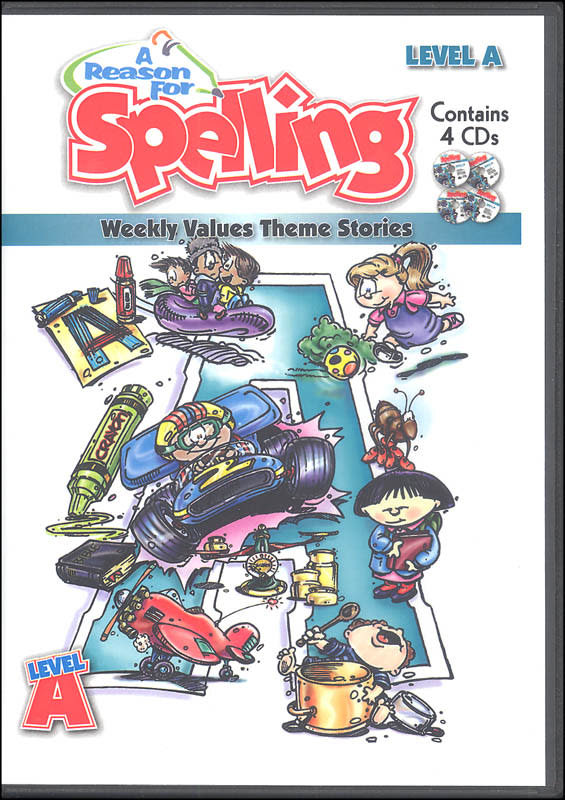A Reason for Spelling is designed for those who want lots of activities in their spelling lessons. Each level consists of a teacher guidebook and student workbook. Both are hefty books: the three student books I reviewed ranged from 206 to 254 pages and the teacher guidebook was 350+ pages. Levels A through F are appropriate for grades 1 through 6. Lessons are very dependent upon the teacher guidebook and presentation by a parent/teacher.
Student workbooks are very colorful, featuring super cartoon illustrations. Lessons begin with a Scripture verse and lengthy "themed story." The stories convey spiritual lessons and might even be considered part of your Bible or religion class. They are well told but do not seem to have a crucial connection to any other parts of the lesson. (For around $30, you can purchase a set of four-audio CDs of the stories for each grade level.) Discussion activities following each story help you evaluate your child's comprehension as well as expand upon the theme.
Next, students are given a pre-test on the week's words, a combination of words with common phonetic elements plus some sight words in the earlier levels, moving toward most-commonly-used words at upper levels.
Because of the classroom-driven design of the program, there's no suggestion that you might skip lessons if students already can spell all the words. If you do choose to skip some lessons for this reason, note that some of the themed stories are continued over a number of weeks, and you might need to read stories from skipped lessons to maintain continuity.
The first workbook activity is fitting spelling words into word-shape boxes then marking common elements as directed. Following this, chalkboard activity helps students build visual memory. Activities for different learning styles (e.g., shaping spelling words out of Play-Doh) are presented. Next are more typical workbook activities such as filling in missing letters, putting words in dictionary order, and identifying rhyming words. Naturally, these activities increase in complexity and difficulty for higher grade levels.
Dictation exercises require students to write dictated words to fill in blanks within sentences. Proofreading exercises offer students multiple-choice options in standardized test format to recognize which word is misspelled. (I suggest skipping such proofreading exercises with students who have poor visual memory. They only become more confused when they get reinforcement with incorrect images.)
Optional games are probably only marginally useful if you are homeschooling only one or two children close in ability level. But these might be useful if you have older students who can join in. Students are also supposed to write weekly journal entries.
Each week's lesson culminates with a post-test. Supplemental activity pages in the teacher guidebook can be photocopied for use with advanced students or those who need extra work.
While this program is probably great for classrooms, there is more here than most homeschoolers need. You might select the most useful activities, skipping others as long as you have the time to sort through all of your options.












